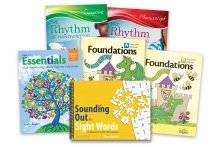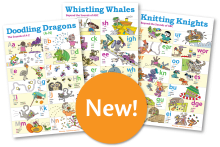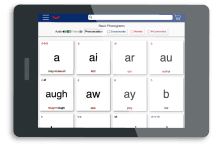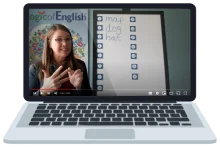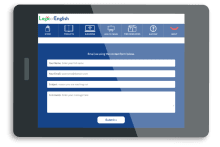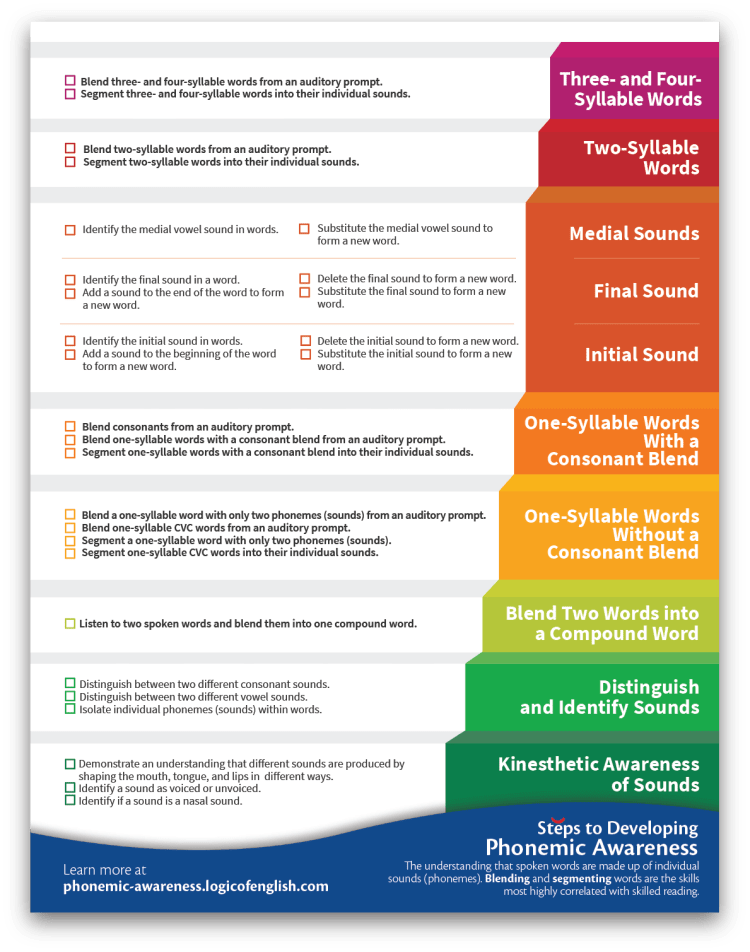Kinesthetic Awareness of Sounds
English phonemes (sounds) are made by shaping the mouth into different positions and turning the voice box on or off. An awareness of how sounds are produced supports reading and spelling instruction.
Distinguish and Identify Sounds
To be able to read and spell, students need to recognize and distinguish the sounds in the language. A kinesthetic awareness of sounds helps students feel the differences when it is difficult to hear them.
Blend Two Words Into a Compound Word
By auditorily blending two words into a compound word (with no print involved), students are introduced to the idea that words can be broken apart and put back together.
Blend Words With Two Phonemes
The skill of blending sounds together is foundational to reading. The simplest words to blend are words that have only two sounds (phonemes).
Blend One-Syllable Words Without a Consonant Blend
Once students demonstrate an understanding of blending words with two sounds, they are ready to blend consonant-vowel-consonant (CVC) words. Continue to practice this skill until they are able to easily and quickly blend CVC words from an auditory prompt.
Blend Two Consonants
Many students struggle to read words with consonant blends. By practicing the skill of blending consonants in isolation, students develop a foundational skill needed to decode these words.
Blend One-Syllable Words With a Consonant Blend
Practicing blending one-syllable words with consonant blends (CCVC or CVCC words) helps to build confidence and teaches the foundational skills needed to read words with consonant blends.
Segment One-Syllable Words
As students master blending one-syllable words, they are ready to begin segmenting them. The ability to segment a spoken word into its individual sounds is the first step in being able to spell it.
Initial Sounds
Once students have mastered the skill of segmenting one-syllable words, they are ready to identify the initial sound. Changing the initial sound to create new words builds further upon this skill.
Final Sounds
Identifying the final sound is a bit more difficult than identifying the initial sound. As students practice each step, they become increasingly aware of the sounds in words and able to identify, isolate and manipulate the sounds in words.
Medial Sound
Identifying the medial vowel sound is difficult for many students. This results in students misspelling vowels. Learning to accurately hear and identify vowels in the context of words prepares students to become strong readers and spellers.
Blend Multisyllabic Words
Blending multisyllabic words is more difficult than blending one-syllable words. Begin instruction with two-syllable words and then progress to three- and four- syllable words. Learning how to blend multisyllabic words helps students to be able to decode longer words.
Segment Multisyllabic Words
As students become comfortable segmenting one-syllable words, increase the difficulty by adding first two- and then three- and four-syllable words. This skill is vital for learning how to spell longer words.

